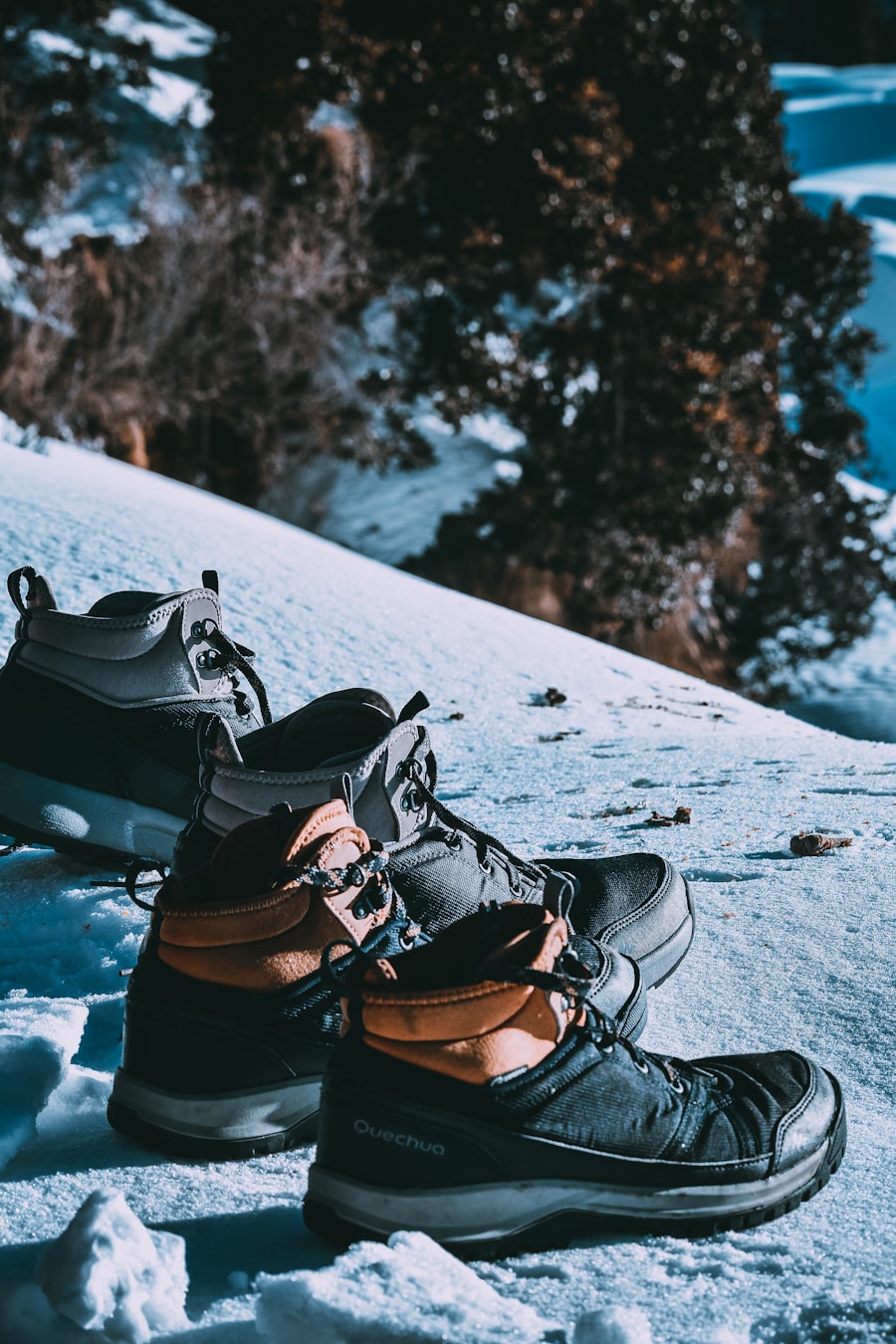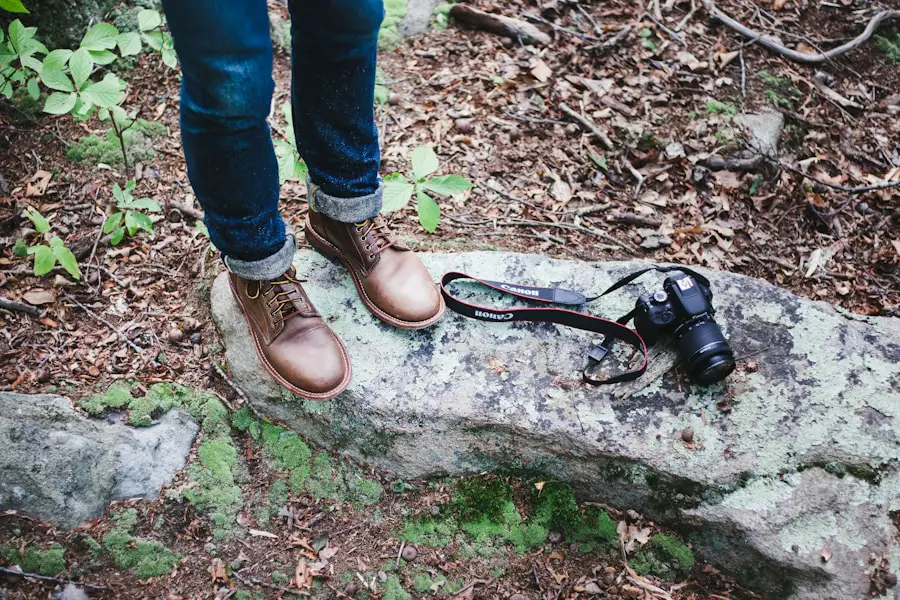Duck boots, a hybrid of traditional rubber boots and insulated footwear, have gained popularity for their unique design and functionality. Originally developed in the early 20th century by L.L. Bean, these boots were crafted to withstand the rigors of wet and muddy conditions, making them ideal for outdoor enthusiasts.
The upper portion is typically made from leather or synthetic materials, while the lower part is constructed from rubber, providing a waterproof barrier against moisture. This combination not only offers protection from the elements but also ensures comfort and durability, making duck boots a staple in many wardrobes. The versatility of duck boots extends beyond their original purpose.
While they are often associated with casual wear and urban settings, many outdoor adventurers have begun to recognize their potential for hiking. The design allows for easy movement, and the waterproof nature of the rubber base keeps feet dry in wet conditions. As hiking continues to grow in popularity, understanding the benefits and limitations of duck boots in this context becomes essential for those looking to explore the great outdoors without sacrificing comfort or style.
Key Takeaways
- Duck boots are a type of waterproof footwear that are designed to keep your feet dry and warm in wet and cold conditions.
- The benefits of duck boots for hiking include their waterproof and insulated design, which provides protection and comfort in wet and cold environments.
- Drawbacks of duck boots for hiking include their heavy weight and lack of breathability, which can lead to discomfort and fatigue during long hikes.
- When choosing the right duck boots for hiking, consider factors such as insulation, traction, and ankle support to ensure they meet your specific hiking needs.
- Tips for hiking with duck boots include wearing moisture-wicking socks, breaking them in before long hikes, and using gaiters to keep out debris and water.
Benefits of Duck Boots for Hiking
One of the primary advantages of duck boots for hiking is their waterproof construction. The rubber lower section effectively seals out water, making them an excellent choice for traversing muddy trails or hiking in rainy weather. This feature is particularly beneficial for hikers who may encounter streams, puddles, or wet terrain, as it helps to keep feet dry and comfortable throughout the journey.
Additionally, many duck boots come with insulation, providing warmth during colder months, which is crucial for maintaining comfort on longer hikes. Another significant benefit is the traction provided by the rubber outsole. Many duck boots are designed with lug patterns that enhance grip on slippery surfaces, such as wet rocks or muddy paths.
This traction can be a game-changer when navigating challenging terrains, allowing hikers to maintain stability and reduce the risk of slips and falls. Furthermore, the cushioned insoles found in many models offer additional comfort, making it easier to tackle longer hikes without experiencing foot fatigue.
Drawbacks of Duck Boots for Hiking

Despite their many advantages, duck boots do have some drawbacks when it comes to hiking. One notable limitation is their weight. While they are generally heavier than traditional hiking boots, this added weight can become cumbersome over long distances.
Hikers who prioritize lightweight gear may find that duck boots slow them down or cause fatigue during extended treks. Additionally, the bulkiness of some models can restrict ankle movement, which may hinder agility on uneven terrain. Another concern is breathability.
Many duck boots are designed with waterproof materials that can trap heat and moisture inside the boot. This lack of ventilation can lead to sweaty feet, which not only causes discomfort but can also increase the risk of blisters. For those planning to hike in warmer climates or during summer months, this can be a significant drawback.
Hikers may need to weigh the benefits of waterproofing against the potential for overheating and discomfort.
How to Choose the Right Duck Boots for Hiking
| Brand | Material | Waterproof | Traction | Insulation |
|---|---|---|---|---|
| L.L.Bean | Leather/Rubber | Yes | Good | Thinsulate |
| Sorel | Leather/Rubber | Yes | Excellent | Removable Liner |
| Columbia | Leather/Rubber | Yes | Good | 200g Insulation |
| Sperry | Leather/Rubber | Yes | Good | Micro-fleece Lining |
Selecting the right pair of duck boots for hiking involves considering several factors to ensure optimal performance and comfort. First and foremost, it is essential to assess the fit. A well-fitting boot should provide enough room for your toes to move without being too loose, which can lead to blisters.
Trying on different sizes and styles is crucial, as various brands may have different sizing standards. Additionally, consider whether you will be wearing thick socks; this can influence the size you choose. Another critical aspect to consider is insulation.
If you plan to hike in colder conditions, look for duck boots with adequate insulation to keep your feet warm. However, if your hikes will take place in milder weather, you may prefer a model with less insulation for better breathability. Additionally, pay attention to the outsole material and tread pattern; a boot with a more aggressive tread will provide better traction on slippery surfaces.
Finally, consider the overall weight of the boot; lighter options may be more suitable for long-distance hikes.
Tips for Hiking with Duck Boots
When hiking with duck boots, there are several tips that can enhance your experience and ensure your comfort on the trail. First, break in your boots before embarking on a long hike. Wearing them around your home or on shorter walks can help soften the materials and mold them to your feet, reducing the likelihood of blisters during your hike.
Additionally, consider using moisture-wicking socks to help manage sweat and keep your feet dry. Another important tip is to pay attention to the terrain you will be hiking on. While duck boots are versatile, they may not be suitable for all types of trails.
For example, if you plan to hike on rocky or technical terrain, you may want to consider additional ankle support or a more specialized hiking boot. Furthermore, always check the weather forecast before heading out; if rain is expected, ensure your boots are properly cleaned and dried after your hike to maintain their waterproof properties.
Alternatives to Duck Boots for Hiking

While duck boots offer unique benefits for hiking, there are several alternatives that may be more suitable depending on specific needs and conditions. Traditional hiking boots are designed specifically for rugged terrain and often provide superior ankle support and breathability compared to duck boots. These boots come in various styles, including lightweight options for day hikes and heavier models for backpacking trips.
Trail running shoes are another alternative that has gained popularity among hikers seeking lightweight footwear. These shoes are designed for agility and speed on trails while offering good traction and breathability. However, they typically lack waterproof features, so they may not be ideal for wet conditions.
For those who prioritize waterproofing but want a lighter option than duck boots, consider waterproof hiking shoes that combine breathability with water-resistant materials.
Common Misconceptions about Duck Boots for Hiking
There are several misconceptions surrounding the use of duck boots for hiking that can lead to confusion among outdoor enthusiasts. One common belief is that all duck boots are created equal in terms of performance and comfort. In reality, there is a wide range of quality among different brands and models.
Some may offer superior insulation and traction while others may fall short in these areas. It’s essential to research specific products rather than relying solely on brand reputation. Another misconception is that duck boots are only suitable for casual wear or urban environments.
While they do excel in these settings due to their stylish appearance and versatility, they can also be effective in various hiking scenarios when chosen wisely. Many hikers have successfully used duck boots on moderate trails; however, it’s crucial to understand their limitations and select appropriate conditions for their use.
Are Duck Boots Good for Hiking?
In evaluating whether duck boots are suitable for hiking, it becomes clear that they offer both advantages and disadvantages depending on individual needs and preferences. Their waterproof design and traction make them appealing for certain conditions; however, factors such as weight and breathability must also be considered when planning hikes. Ultimately, understanding these elements will help hikers make informed decisions about whether duck boots align with their outdoor activities or if alternative footwear might better serve their needs in various environments.
If you’re considering whether duck boots are good for hiking, you may also want to check out this article on the best hiking backpack for multi-day treks. Having the right gear, including a sturdy backpack, can make a big difference in your hiking experience. Check out the article here for some great recommendations on backpacks that will help you stay comfortable and organized on your next outdoor adventure.
Love travel? Join Our Facebook Community For More Tips.
FAQs
What are duck boots?
Duck boots, also known as bean boots, are a type of waterproof footwear that typically feature a rubber sole and a leather or rubber upper. They are designed to keep the feet dry and warm in wet and cold conditions.
Are duck boots good for hiking?
Duck boots are not specifically designed for hiking and may not provide the necessary support and traction for more rugged hiking trails. While they can be suitable for light hiking in wet or muddy conditions, they may not offer the same level of stability and protection as traditional hiking boots.
What are the advantages of wearing duck boots for hiking?
Duck boots are waterproof and can keep your feet dry in wet conditions. They are also relatively lightweight and comfortable, making them a good option for casual walks or light hiking.
What are the disadvantages of wearing duck boots for hiking?
Duck boots may lack the ankle support and traction needed for more challenging hiking terrain. They may also not provide the same level of protection from rocks, roots, and other obstacles encountered on hiking trails.
Can duck boots be used for hiking in snow?
Duck boots can be suitable for hiking in light snow or slushy conditions, but they may not provide enough insulation or traction for more intense snow hiking. It is important to consider the specific conditions and terrain before using duck boots for snow hiking.

